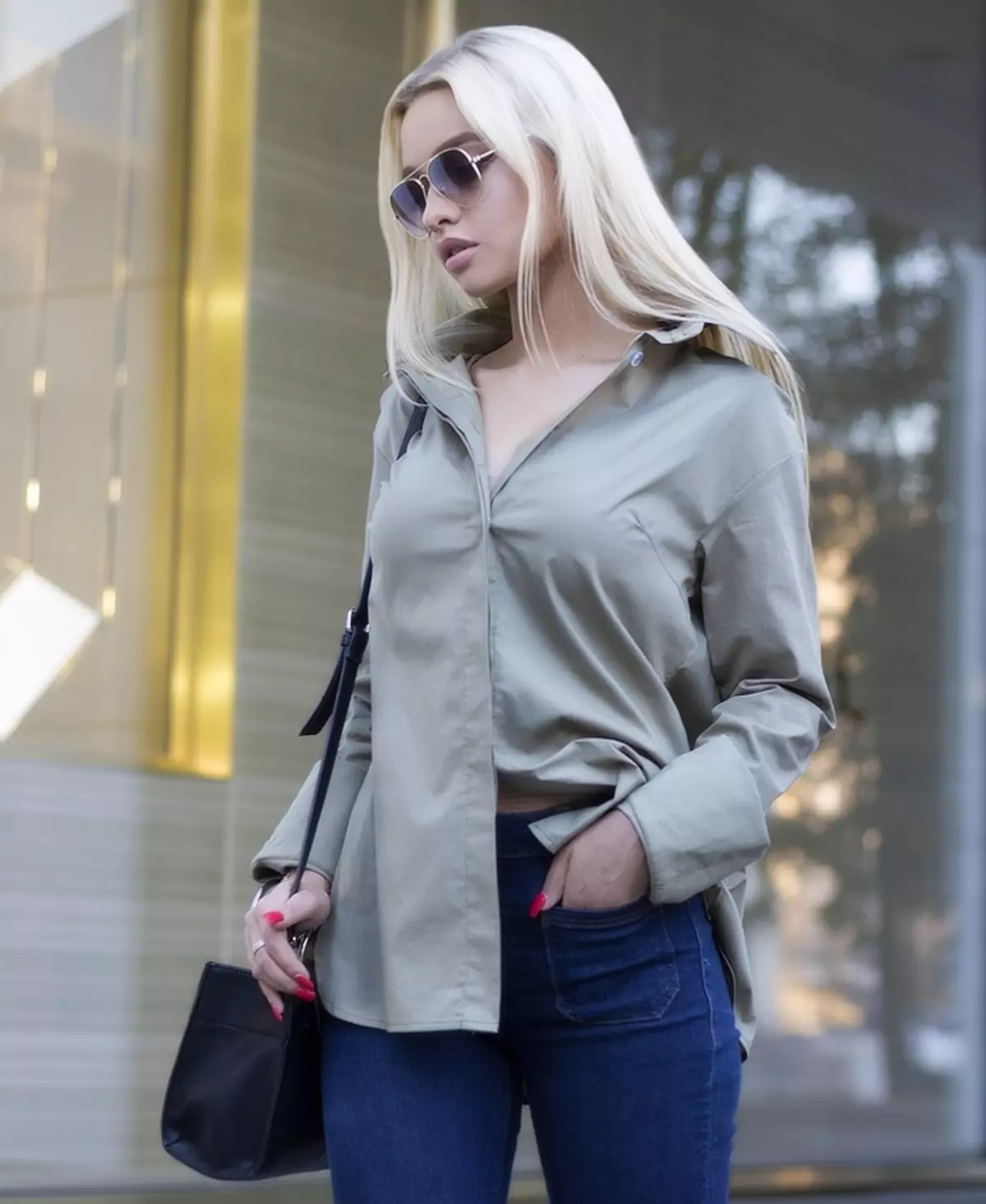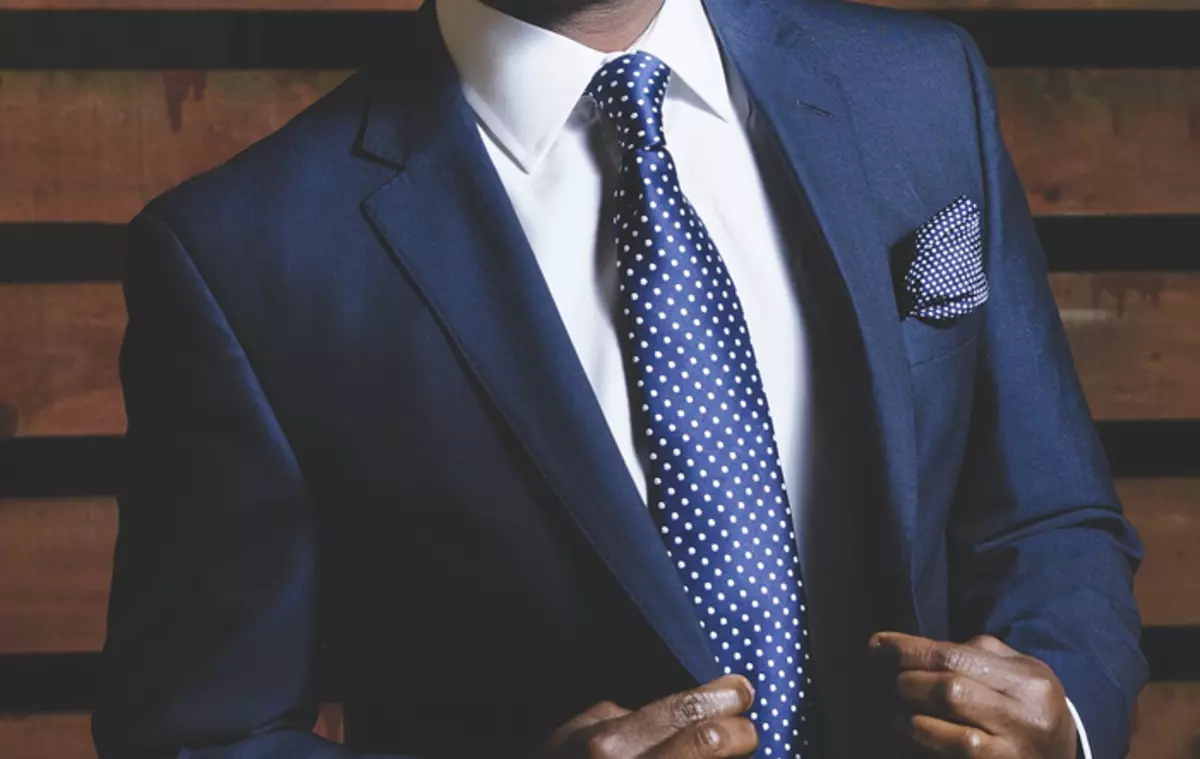Nowadays, it is impossible to introduce a wardrobe of a modern man without such a familiar attribute as a shirt that has long been the basis of the style. In a strong floor, it has always been a symbol of elegance and refinement, but at the same time rigor. However, women have long tamed this comfortable thing and wear it completely in their own way.
During its development, the shirt has undergone many changes: this applies not only to the style and fabric, but also style. Now it is easy to identify in four elements: the presence of a collar, sleeves, shelves and buttons. But it was not always so. Let's figure out how this usual wardrobe object now originated.
It turns out that the history of the shirt is rooted very deeply. All the same dressings from animal fabric are not the most convenient option of clothing, so it is not surprising that they quickly found a replacement. Archaeological finds confirm that the first samples of linen shirts Ancient Egyptians wore about five thousand years ago. Then followed the chitons of the Greeks, Roman tunics, Babahi Baboha. It is they who are considered predecessors of modern shirts. True, at that time she was rather an element of underwear: there was no collar and cuffs, only a special seam was present, which could be tightened or fastened.
On the transformation of this item of the wardrobe, the institute of knighthood, and the court culture also provided. Knights worn shirts of flax under armor. The highest estate was more subtle shirts of cotton and flax, and silk was considered a special chic.
A completely different role of the shirt gained during the cultural heyday - the Renaissance. If earlier than a person in the underwear at the bottom of the pile can be seen only on the scaffold before execution, now the shirt was perceived by the fashionable element of the wardrobe, the part of which was exhibited for everyone. And so did not only men, but also women. Sleeveless of the outerwear was made special cuts through which the fabric shirts was dragged. Such a tendency provided contrasting color combinations of dark shades of outerwear and bright - the lower shirt, which was extremely fashionable in those days.
Over time, snow-white models made of thin flax become a distinctive feature of people of noble origin. Proshrudine wore shirts of more coarse and dark fabric. From work, white fabric was faster, and representatives of the lower layers could not afford such a luxury (logical, because the shirts needed to wash and starch, which cost a lot of money). At this time, the shirt penetrates literature and art - on the canvases of many artists, for example Karavaggio, and in literary works, such as "Decameron", men and women are often put on her.

Shirt allows you to create a strict and more casual image
Photo: pixabay.com/ru.
Away excesses
At the beginning of the XVI century, the Italians invented laces, which became a permanent element of the male shirt. At about the same time, the first versions of the collars appeared: from small flat, which were called "French", to the Italian version called "Jabro". Soon the shirt began to be perceived as not lower, but the upper clothes, and in the XVII century, cufflinks appeared. Initially, they were a pair of glass buttons connected by a chain.
But from the middle of the XVIII century, everything has changed dramatically, new trends came from England. They used in demand shirt with a minimum of jewelry, the collar was standing with a slightly curded ends. Such clothes were perfectly combined with Frak, which included in the seventies of the XVIII century. This was the new world trend, which after the Great French Revolution only strengthened. The shirts began to sew on an industrial scale, about the decorations and lace everyone forgot everyone and began to wear simple and comfortable things.
American domination
In the XIX century, the shirt gradually becomes nationwide clothes in the United States. In the era of the Civil War, it is part of the uniform for soldiers, and for the first time the size of this detail of the wardrobe is standardized. At that time she turns into a shirt, familiar to us and now. It is stopped to wear through the head, now it is fastened for buttons in front, like simple outerwear. The starchy rigid collars are inferior to the softer.
In the twentieth century, the popularization of various types of shirts began, primarily through American cinema. For example, Humphrey Bogart wore snow-white shirts with leaning sleeves. Tom Sellek in the cult series "Magnum PI" preferred Hawaiian, and John Wayne appeared on the screens in an unusual shirt in the style of the Wild West.
The beginning of the 20th century was noted by democratization and in women's fashion. During the First World War, women wore a uniform, which included all the same shirts. There were also free blouses that are not constraintful movements. In the twenties, shirt dresses from low-cost silk and cotton fabrics included.

In the twentieth century, the popularization of various types of shirts began, primarily through American cinema
Photo: pixabay.com/ru.
Ahead of the planet all
For a long time, the shirt is part of the national apparel in our country. In the peasant environment, she had a special meaning. The first baby diapers were the stirred shirts of parents - for the boy father, for the girl, respectively, the mother's shirt. Such diapers, according to belief, were protected from evil forces. For the same reason, in the first years of life, children wore an "legacy" from parents or senior brothers and sisters. The subcommunicative shirt reached the floor and was often the only element of clothing.
By the middle of the 9th century on the style adopted in Kievan Rus, the influence of Byzantium, with which our emerging state was commonly communicated. As a front door, the Kiev princes wore tunics from expensive Byzantine fabrics. Such clothes sewed with long sleeves and cut at the bottom of the sides.
The peasant shirt from ordinary canvas was flashed for beauty with red threads. They wore her breath, rejoicing with a lace or an unbroken belt. For special occasions in the chest of each self-respecting peasant, a detached necklace collar was certainly lying. Women put on a long shirt reaching the feet. Such clothes were usually from the white canvas. Official parties could afford to afford a rough silk shirt. The neck, hem and bottom of the sleeves were decorated with embroidery.
At the beginning of the XVIII century, Peter I actively took up the appearance of the court nobility. Forced not only beard shaving, but also dressing on the European manner. And in Europe, then just wearing lower shirts with lace inserts from the finest fabric. Naturally, the merchants and mothers initially reluctantly parted with the traditional Russian shirt, but it was difficult to resist the king - in general, they soon surrendered and dodged into fashionable European shirts.
In the middle of the XIX century in the Intelligent Environment of Slavophiles, the popularity of the spubath-spindlers (by the way, they were the main clothes of the then peasants). And at the end of the century, uniforms are already being formed for the emerging working class, which, of course, includes comfortable shirts.

Separate mention deserves a tunic shirt
Photo: pixabay.com/ru.
Female look
Now shirts wear everything. And if earlier for women, individual shirts were made, now it is often possible to see a lady flashes in a shirt, obviously taken from the boyfriend. But how did the classic men's shirt spelled in the wardrobe of the beautiful floor? For this it is worth saying thanks Coco Chanel. For a start, she dressed us in pants and thus equalized in rules with a strong half of humanity. The further development of events went naturally: during the emancipation, women continued to master those areas of activity and wardrobe items that were previously closed for them. And, of course, began to wear shirts. This at first glance is a simple thing to this day gives a huge scope for creativity. Of course, first of all it depends on where exactly you want to wear this thing.
Going to work or on a business meeting? You need a pencil skirt or classic arrows trousers. The shirt needs to be fed, and a pair of upper buttons - unbutton. Combine the resulting set with high-heeled shoes and strict accessories.
But the shirt can help you out not only in the office. For example, it is easy to create a bohemian image with it. It is enough to wear a shirt on the topless sleeves and complement the Look shorts or skirt. Footwear can choose any, suit open sandals without heel and stiletto shoes. Thus, the shirt will play the role of the tunic, with which the decorations in ethnic style wonderfully look.
No less bold and freshly looks like a combination of a white shirt with a closure of a classic cloth of a sand or beige shade, light tile and a belt. The shirt in such a set must be left unbuttoned, and its sleeves - to roll carelessly. Gladiator's sandals are suitable as shoes.
And, of course, a tunic shirt deserves a separate mention. It is popular among women of any age, because it is able to emphasize the strengths of the shape and disguise the shortcomings. Well, and besides, it is just incredibly convenient.
So, the men's shirt firmly settled in the women's wardrobe. You can create any image with it, while remaining feminine. The main thing is not to be afraid to use accessories.
